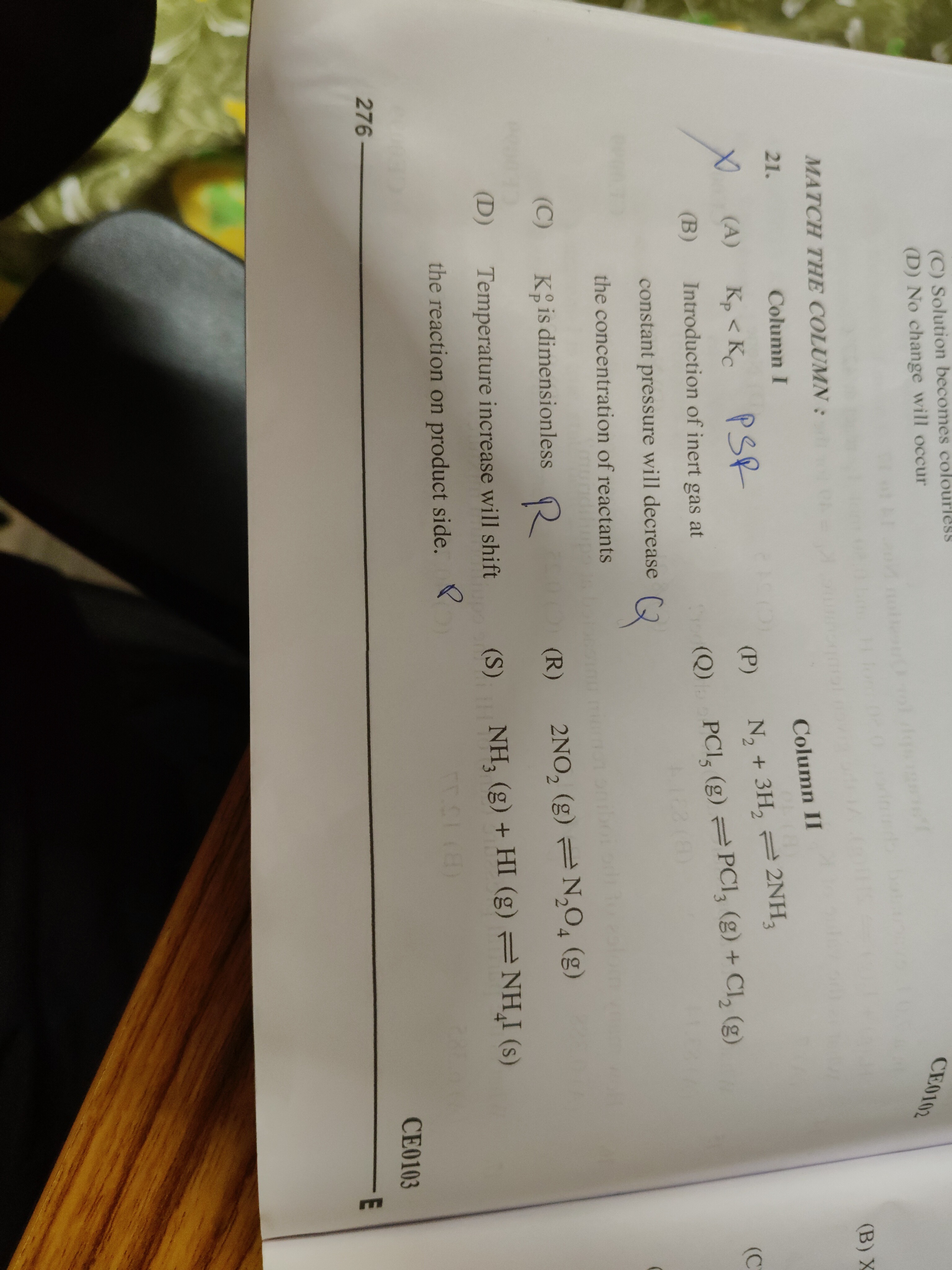Question
Question: MATCH THE COLUMN : 21. | Column I | Column II ...
MATCH THE COLUMN :
| Column I | Column II |
|---|---|
| (A) Kp < Kc PSR | (P) N2+3H2⇌2NH3 |
| (B) Introduction of inert gas at constant pressure will decrease the concentration of reactants Q | (Q) PCl5(g)⇌PCl3(g)+Cl2(g) |
| (C) K∘p is dimensionless R | (R) 2NO2(g)⇌N2O4(g) |
| (D) Temperature increase will shift the reaction on product side. P | (S) NH3(g)+HI(g)⇌NH4I(s) |

A
(A) → (P), (B) → (S), (C) → (R), (D) → (Q)
B
(A) → (S), (B) → (P), (C) → (Q), (D) → (R)
C
(A) → (R), (B) → (Q), (C) → (S), (D) → (P)
D
(A) → (Q), (B) → (R), (C) → (P), (D) → (S)
Answer
(A) → (P), (B) → (S), (C) → (R), (D) → (Q)
Explanation
Solution
- (A) Kp<Kc: This condition is met when Δng<0. Reaction (P) N2+3H2⇌2NH3 has Δng=2−(1+3)=−2, satisfying the condition.
- (B) Introduction of inert gas at constant pressure: This increases the volume, decreasing partial pressures and concentrations of all gaseous species. Reaction (S) NH3(g)+HI(g)⇌NH4I(s) has gaseous reactants whose concentrations decrease.
- (C) Kp∘ is dimensionless: The thermodynamic equilibrium constant Kp∘ is defined using activities or partial pressures relative to a standard state, making it dimensionless. Reaction (R) 2NO2(g)⇌N2O4(g) is a standard example for this concept.
- (D) Temperature increase will shift the reaction on product side: This indicates an endothermic forward reaction (ΔH>0). Reaction (Q) PCl5(g)⇌PCl3(g)+Cl2(g) is endothermic; hence, increasing temperature favors product formation.
